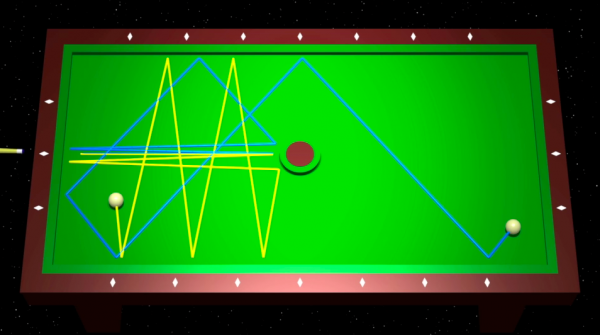Determinism
by Areeba Abid
Determinism is the idea that if all the net forces acting on a system are known, the behavior of the system can be calculate using iterative prediction to determine its state at any given time.
The Main Idea
Physical and Philosophical Determinism
Newton's laws allow us to predict the motion of an object if we know the initial position, initial momentum, and forces acting on the object. Using iterative prediction, we can calculate where the object will be at any given time in the future. If this idea is extrapolated to all objects in the universe, it would seem that we could predict the future of the entire universe if we only knew the initial conditions (the starting positions and momentums, and forces being applied) of each object. From a scientific standpoint, this means that the future state of the universe should theoretically be able to be determined by scientists using simple physics. This idea has been taken even further in a philosophical context to argue that humans do not have free will, because the atoms that make up our bodies simply continue to move in the paths we would expect based on their initial conditions.
Practical Limitations
While the idea of determinism seems straightforward at first, there are actually complicated reasons that we cannot precisely predict the future of small, simple systems, much less the entire universe.
One practical limitation is the fact that initial conditions can only be measured as accurately as our instruments allow, and after a few time steps, small inaccuracies build on each other. This means that over time, our model of the system and our predictions of its future state stray farther and farther away from the actual future state of the system. This is why iterative prediction is usually only used over small periods of time.
Another practical limitation is that we must necessarily simplify systems to be able to model and calculate them. It is impossible to account for every interaction within and outside a system, since every single particle in the universe interacts with every single other particle in the universe, resulting in an unthinkable number of calculations that would need to be done to accurately account for the net forces on a system. This introduces error that limits the long term accuracy of any calculations that we can carry out.
Chaos
Determinism and chaos are related, almost opposite concepts. Chaos results in systems that are extremely sensitive to initial conditions. This means that tiny changes in initial conditions quickly lead to dramatic differences in behavior. Any system that exhibits chaos presents a challenge to deterministic theory because the future behavior of a system is so difficult to predict and varies wildly based on miniscule, imperceptible differences in initial conditions, demonstrating in an extreme way the practical limitations that hinder deterministic calculations.

Modeling
A Mathematical Model
For a deeper understanding of the mathematical equations relevant to determinism, see Iterative Prediction.
Modeling Determinism Using VPython
Basic systems can be considered deterministic with some level of accuracy. In Physics 1, you will often use VPython to model the future behavior of systems given a set of initial conditions. The steps to do this, with given time step (deltat), initial momentum (p_initial), and initial position (pos_intiial) are:
1. Calculate the net force on the object.
2. Calculate the change in momentum (deltap) of the object using deltap = Fnet*deltat.
3. Calculate the final momentum using p_initial + deltap = p_final.
4. Calculate final velocity (v_final) by dividing final momentum by mass.
5. Calculate change in position (deltapos) using v_final*deltat = deltapos.
6. Calculate final position (pos_final) using pos_initial + deltapos = pos_final.
These steps should be repeated using a while loop. Sample code and basic program can be found here.
Examples of Deterministic Systems
Weather Systems
Be sure to show all steps in your solution and include diagrams whenever possible
Connectedness
Philosophical Determinism
Determinism has fascinating implications for the concept of free will. Even if it is impossible for us to calculate the future behavior of a system accurately, it is still without a doubt the direct result of the initial conditions, as directed by Newton's laws. Consider the human body as a physical system. If the body is simply a collection of particles and thoughts in the brain are just neurons firing, is every feeling experienced and every decision made by a person simply the result of whatever initial conditions they started with? Is it possible to differentiate between the laws that regulate matter and the laws that regulate our own bodies? What happens when we try to apply the laws of physics to the workings of our minds? It's difficult to think of your body as a collection of chemicals that behave like a very complicated deterministic system, but the implications are mind blowing and philosophical determinism has been the subject of controversy since ancient times.
- How is this topic connected to something that you are interested in?
- How is it connected to your major?
- Is there an interesting industrial application?
History
Put this idea in historical context. Give the reader the Who, What, When, Where, and Why.
See also
Are there related topics or categories in this wiki resource for the curious reader to explore? How does this topic fit into that context?
Further reading
Books, Articles or other print media on this topic
External links
References
This section contains the the references you used while writing this page